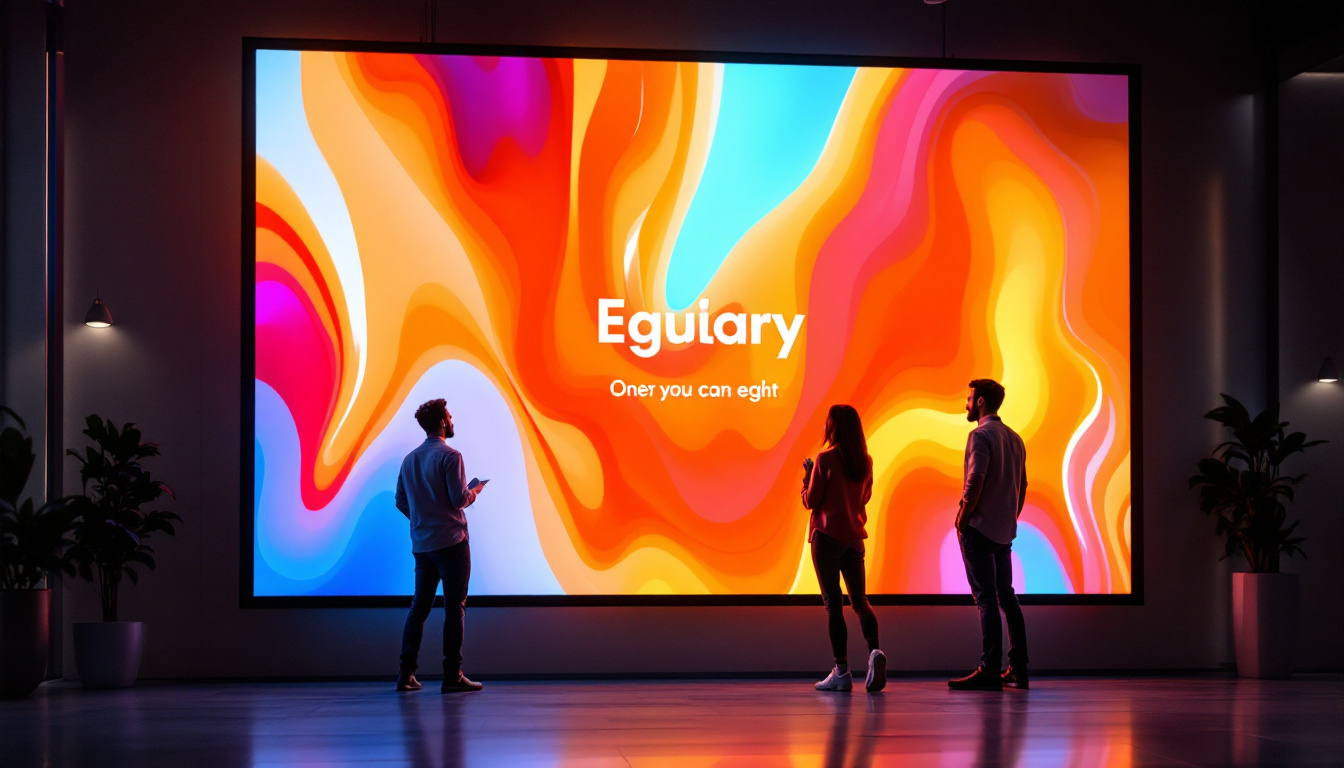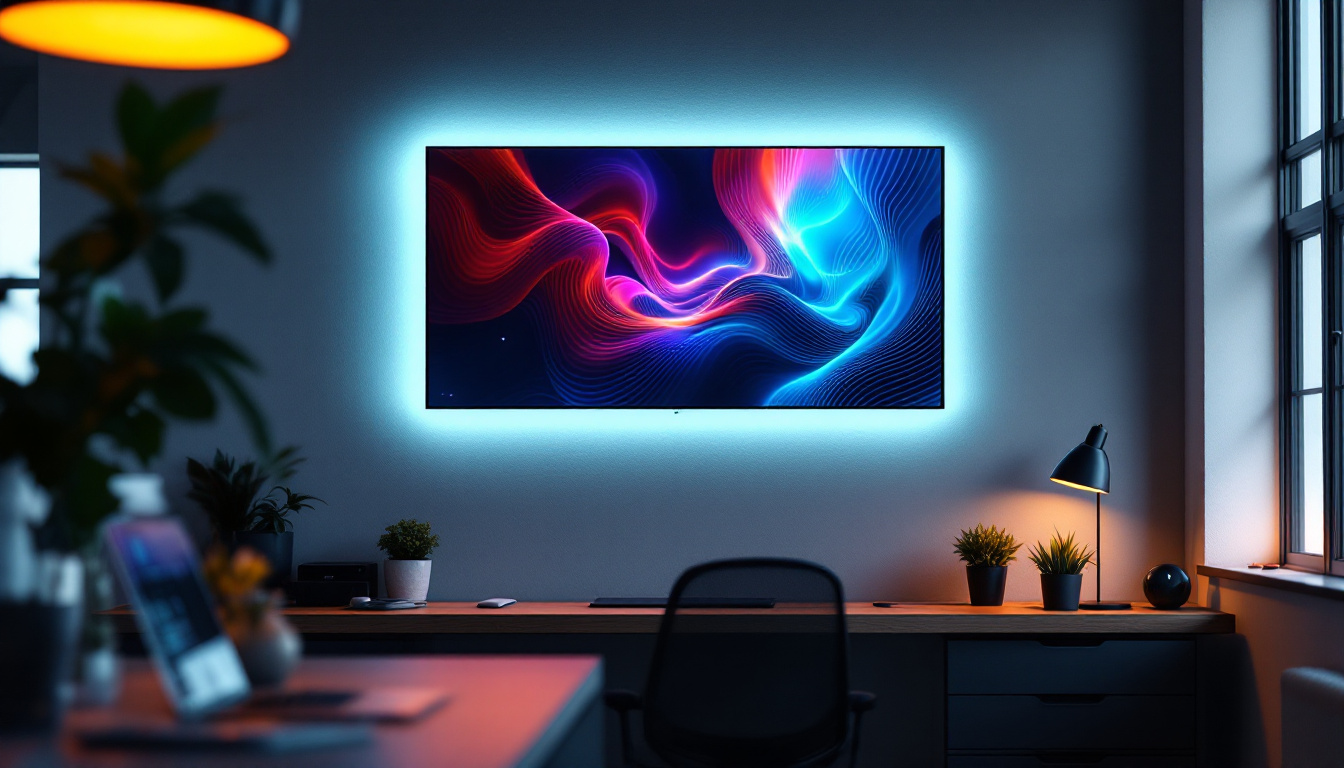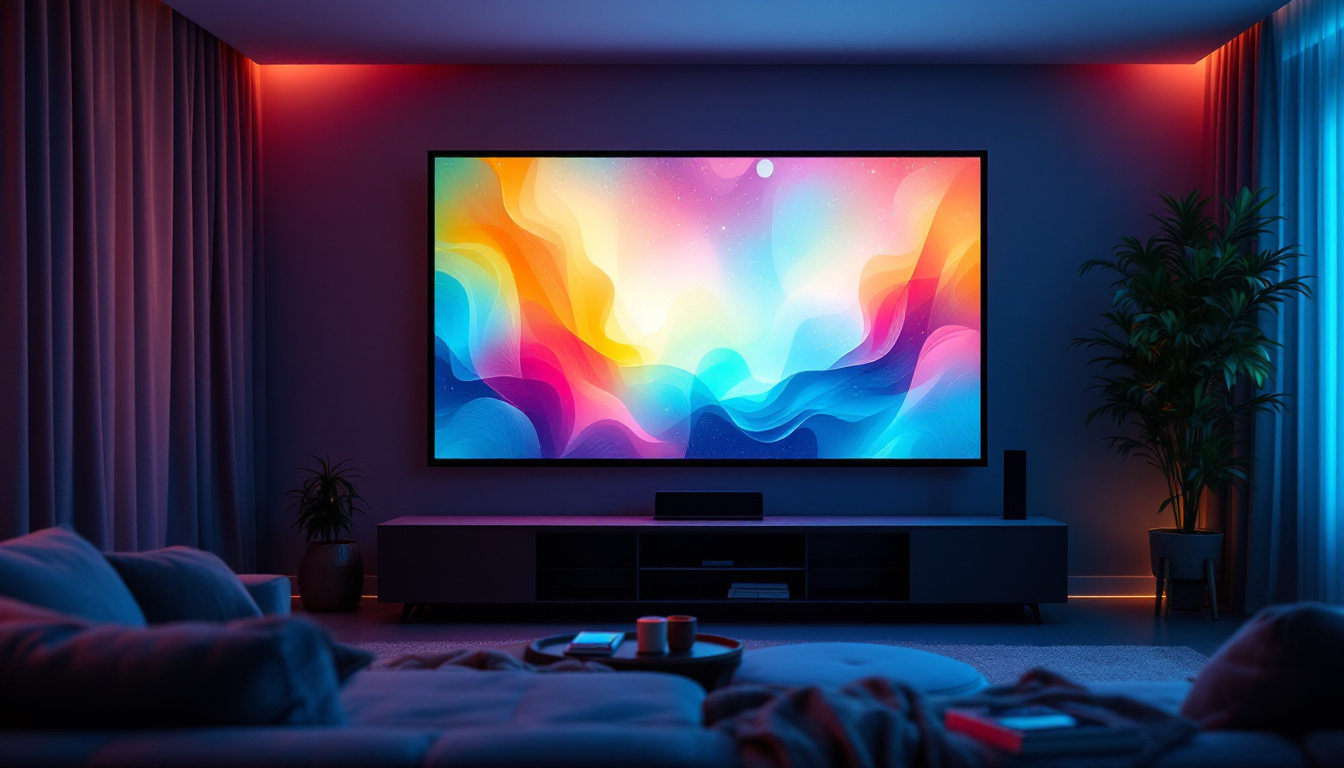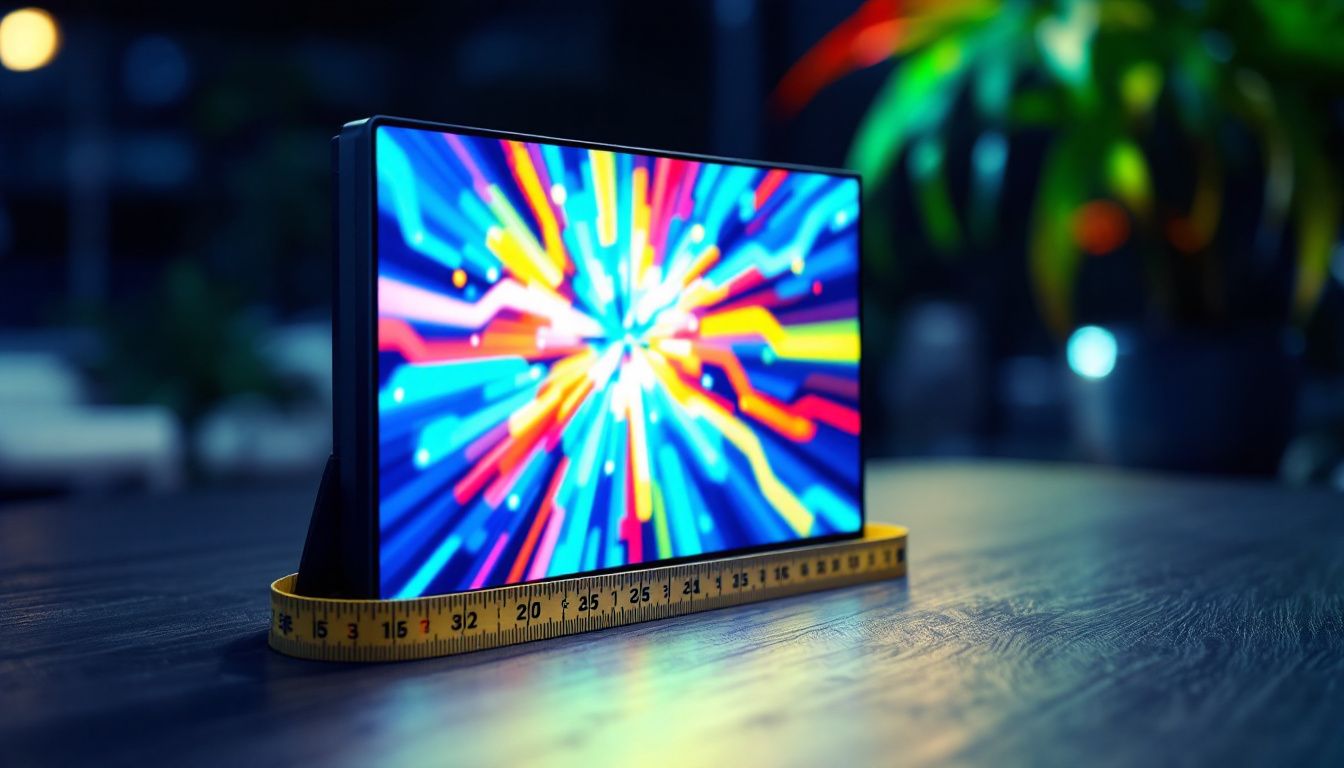In the ever-evolving world of display technology, understanding the differences between LED and LCD displays is crucial for consumers and professionals alike. Both technologies have their unique advantages and applications, making them suitable for various environments. This article delves into the key differences between LED and LCD displays, providing insights into their functionalities, advantages, and ideal use cases.
Understanding LCD Displays
Liquid Crystal Display (LCD) technology has been a staple in the display market for many years. LCDs utilize liquid crystals sandwiched between two layers of glass or plastic. When an electric current passes through the liquid crystals, they align to allow varying degrees of light to pass through, creating images. However, LCDs require a backlight to illuminate the display, as the liquid crystals themselves do not emit light. This fundamental characteristic of LCDs has led to innovations in backlighting technology, such as the development of edge-lit and direct-lit LED backlights, which enhance brightness and energy efficiency.
How LCD Works
In an LCD, the backlight is typically provided by fluorescent tubes or LEDs. The light passes through the liquid crystals, which modulate the light to create the desired colors and images. The combination of color filters and the manipulation of light by the liquid crystals allows for the creation of vibrant images. However, the reliance on a backlight can limit the contrast and color accuracy compared to other technologies. To address these limitations, advancements like local dimming and quantum dot technology have been introduced, which help improve the overall picture quality by enhancing contrast ratios and expanding the color gamut.
Advantages of LCD Displays
Despite their limitations, LCD displays offer several advantages. They are generally more affordable than LED displays, making them a popular choice for budget-conscious consumers. Additionally, LCDs are thinner and lighter than older CRT displays, making them suitable for a variety of applications, from televisions to computer monitors. Their energy efficiency has also improved over the years, allowing for lower power consumption compared to traditional displays. Furthermore, LCDs are known for their longevity and durability, as they are less prone to screen burn-in issues that can affect other display technologies, such as OLED. This makes them an excellent choice for environments where displays are used continuously, such as in commercial settings or public information displays.
Exploring LED Displays
Light Emitting Diode (LED) displays represent a significant advancement in display technology. Unlike traditional LCDs, LED displays use light-emitting diodes as their primary source of illumination. This technology can be applied in two main configurations: direct LED and edge-lit LED displays. Each configuration offers distinct advantages and is suited for different applications.
Types of LED Displays
Direct LED displays utilize an array of LEDs placed directly behind the screen, providing uniform lighting across the entire display. This configuration enhances brightness and contrast, resulting in deeper blacks and more vibrant colors. On the other hand, edge-lit LED displays have LEDs positioned along the edges of the screen, which light the display from the sides. While edge-lit displays are typically thinner and lighter, they may not provide the same level of uniformity in brightness as direct LED displays.
Benefits of LED Technology
LED displays offer numerous benefits that make them increasingly popular in various applications. One of the most notable advantages is their superior energy efficiency. LED technology consumes significantly less power than traditional LCDs, making them an environmentally friendly choice. Furthermore, LED displays can achieve higher brightness levels, making them ideal for use in well-lit environments.
In addition to energy efficiency, LED displays boast a longer lifespan compared to their LCD counterparts. With a typical operational life of over 50,000 hours, users can enjoy years of high-quality viewing without the need for frequent replacements. This durability not only translates into cost savings over time but also reduces electronic waste, contributing to a more sustainable future. Moreover, the rapid response time of LED technology allows for smoother motion display, making them particularly advantageous for fast-paced video content, such as sports and action movies.
Applications of LED Displays
LED displays have found their way into a myriad of applications, ranging from consumer electronics to large-scale advertising. In the realm of consumer electronics, LED TVs have become a staple in households, providing viewers with stunning picture quality and immersive experiences. In commercial settings, digital billboards and signage leverage LED technology to capture attention with vibrant colors and dynamic content. Additionally, the versatility of LED displays allows them to be used in unconventional formats, such as flexible screens for curved surfaces or transparent displays that can blend seamlessly into their surroundings, opening up new possibilities for innovative design and functionality.
Key Differences Between LED and LCD Displays
While LED displays are often marketed as a separate category, it is essential to understand that they are, in fact, a type of LCD display. The primary difference lies in the backlighting technology used. Here are some key differences to consider:
Backlighting Technology
The most significant distinction between LED and LCD displays is the backlighting technology. Traditional LCDs use fluorescent backlights, while LED displays utilize light-emitting diodes. This difference impacts the overall performance, brightness, and energy efficiency of the displays. LED backlighting allows for better contrast ratios and color accuracy, enhancing the overall viewing experience.
Color and Brightness
LED displays generally offer superior color reproduction and brightness levels compared to traditional LCDs. The ability to achieve deeper blacks and brighter whites contributes to a more immersive viewing experience. This is particularly important for applications such as gaming and high-definition video playback, where color accuracy and contrast play a crucial role.
Energy Efficiency
Energy efficiency is another critical factor to consider. LED displays consume less power than traditional LCDs, making them a more sustainable option. This efficiency not only reduces electricity costs but also contributes to a lower carbon footprint. As energy concerns become increasingly important, the shift towards LED technology is becoming more pronounced.
Applications of LED and LCD Displays
Both LED and LCD displays find applications across various industries, each suited for specific purposes. Understanding these applications can help consumers make informed decisions based on their needs.
Common Uses of LCD Displays
LCD displays are commonly used in a variety of settings, including:
- Televisions: Many budget-friendly televisions utilize LCD technology due to its affordability.
- Computer Monitors: LCD monitors are prevalent in offices and homes, offering a good balance of performance and price.
- Mobile Devices: Smartphones and tablets often use LCD technology for their displays, providing vibrant colors and decent battery life.
Popular Applications of LED Displays
LED displays have gained popularity in numerous applications, including:
- Digital Signage: LED displays are widely used for advertising and information dissemination in public spaces.
- Televisions: High-end televisions often feature LED technology for superior picture quality.
- Outdoor Displays: LED technology is ideal for outdoor environments, as it can withstand various weather conditions while maintaining brightness.
Choosing the Right Display for Your Needs
When deciding between LED and LCD displays, several factors should be considered. Understanding the specific requirements of the intended application can help guide the decision-making process.
Budget Considerations
Budget is often a significant factor when choosing a display. Traditional LCDs tend to be more affordable, making them suitable for consumers looking for cost-effective options. However, the long-term savings associated with energy-efficient LED displays may justify the initial investment for some users.
Intended Use and Environment
The intended use of the display plays a crucial role in the decision-making process. For example, if the display will be used in a brightly lit environment, an LED display may be more suitable due to its superior brightness and contrast. Conversely, for applications where cost is the primary concern, an LCD display may suffice.
Longevity and Maintenance
LED displays generally offer longer lifespans compared to traditional LCDs, making them a more durable option. Additionally, the lower power consumption of LED displays can lead to reduced maintenance costs over time. Consumers should weigh these factors against their specific needs and preferences.
The Future of Display Technology
As technology continues to advance, the landscape of display technology is evolving rapidly. Innovations such as OLED (Organic Light Emitting Diode) and MicroLED are emerging, offering even greater possibilities for color accuracy, contrast, and energy efficiency. While LED and LCD displays will continue to play a significant role in the market, these new technologies are poised to redefine the viewing experience.
Emerging Technologies
OLED technology, for instance, allows for individual pixels to emit their light, resulting in true blacks and unparalleled contrast ratios. This technology is becoming increasingly popular in high-end televisions and smartphones. MicroLED, on the other hand, promises to deliver the benefits of OLED without some of its drawbacks, such as burn-in issues.
Environmental Considerations
As consumers become more environmentally conscious, the demand for energy-efficient displays will continue to rise. Manufacturers are likely to focus on developing sustainable technologies that minimize energy consumption and reduce waste. This shift will not only benefit consumers but also contribute to a more sustainable future for the planet.
Conclusion
Understanding the differences between LED and LCD displays is essential for making informed decisions in today’s technology-driven world. While both technologies have their unique advantages, LED displays stand out for their superior brightness, color accuracy, and energy efficiency. As the market continues to evolve, consumers should stay informed about emerging technologies and trends to ensure they choose the best display for their needs.
Whether for personal use or professional applications, the right display can significantly enhance the viewing experience. By considering factors such as budget, intended use, and environmental impact, consumers can make choices that align with their preferences and values. As technology progresses, the possibilities for display innovation are limitless, promising exciting developments for the future.
Discover the Future of Visual Experience with LumenMatrix
Ready to elevate your visual communication and embrace the future of display technology? LumenMatrix is at the forefront of LED innovation, offering a comprehensive range of LED display solutions tailored to your unique needs. From captivating Indoor LED Walls to dynamic Outdoor LED Displays and beyond, our products are designed to make your brand shine and engage your audience like never before. Don’t miss out on the opportunity to transform your space with cutting-edge LED displays. Check out LumenMatrix LED Display Solutions today and step into a world of unparalleled visual clarity and impact.































